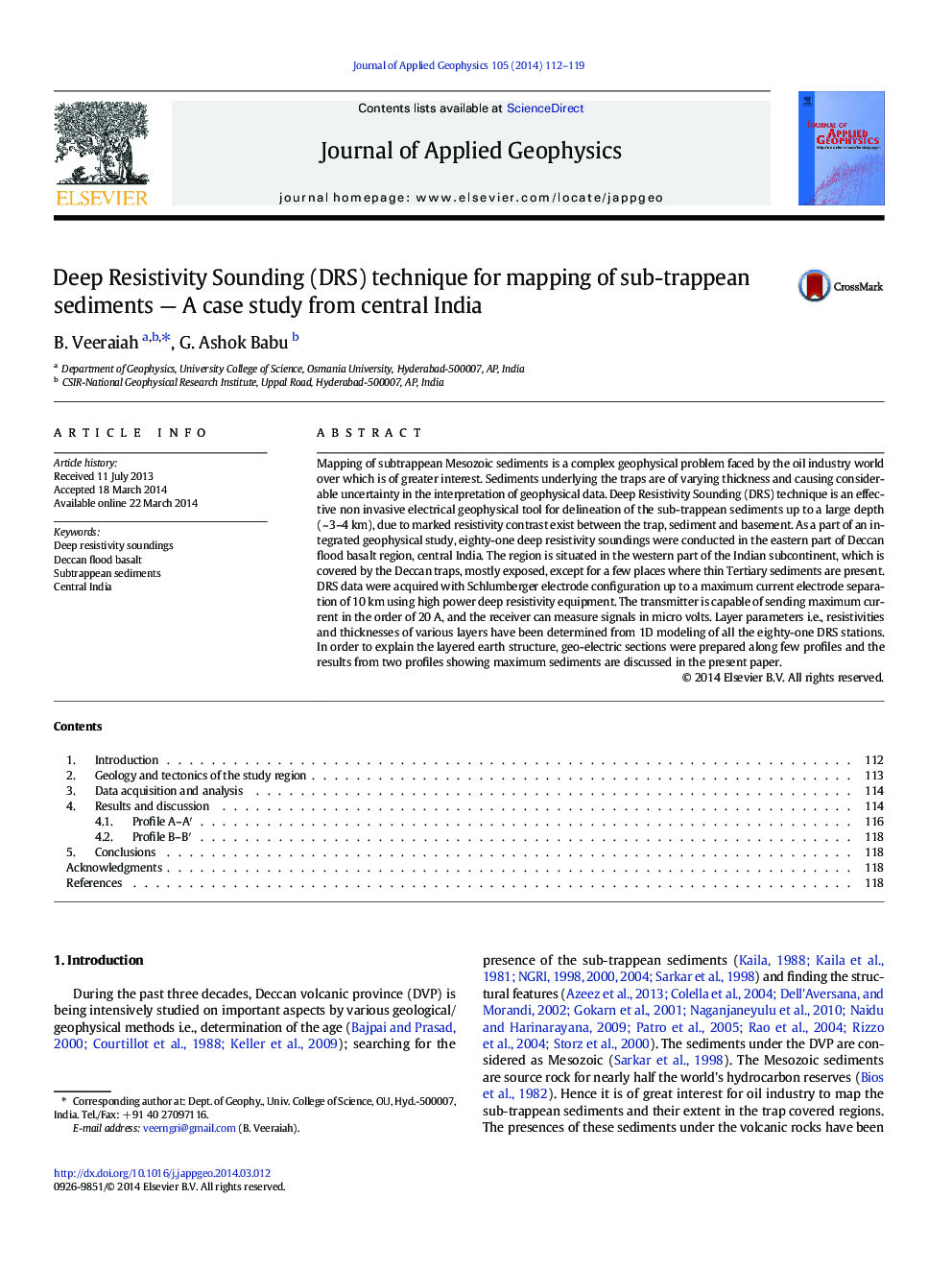| کد مقاله | کد نشریه | سال انتشار | مقاله انگلیسی | نسخه تمام متن |
|---|---|---|---|---|
| 4740159 | 1641146 | 2014 | 8 صفحه PDF | دانلود رایگان |

Mapping of subtrappean Mesozoic sediments is a complex geophysical problem faced by the oil industry world over which is of greater interest. Sediments underlying the traps are of varying thickness and causing considerable uncertainty in the interpretation of geophysical data. Deep Resistivity Sounding (DRS) technique is an effective non invasive electrical geophysical tool for delineation of the sub-trappean sediments up to a large depth (~ 3–4 km), due to marked resistivity contrast exist between the trap, sediment and basement. As a part of an integrated geophysical study, eighty-one deep resistivity soundings were conducted in the eastern part of Deccan flood basalt region, central India. The region is situated in the western part of the Indian subcontinent, which is covered by the Deccan traps, mostly exposed, except for a few places where thin Tertiary sediments are present. DRS data were acquired with Schlumberger electrode configuration up to a maximum current electrode separation of 10 km using high power deep resistivity equipment. The transmitter is capable of sending maximum current in the order of 20 A, and the receiver can measure signals in micro volts. Layer parameters i.e., resistivities and thicknesses of various layers have been determined from 1D modeling of all the eighty-one DRS stations. In order to explain the layered earth structure, geo-electric sections were prepared along few profiles and the results from two profiles showing maximum sediments are discussed in the present paper.
Journal: Journal of Applied Geophysics - Volume 105, June 2014, Pages 112–119